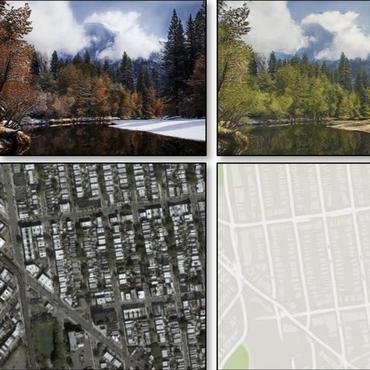Search Results for author: Yingjie Tian
Found 12 papers, 6 papers with code
Message-passing selection: Towards interpretable GNNs for graph classification
no code implementations • 3 Jun 2023 • Wenda Li, KaiXuan Chen, Shunyu Liu, Wenjie Huang, Haofei Zhang, Yingjie Tian, Yun Su, Mingli Song
In this paper, we strive to develop an interpretable GNNs' inference paradigm, termed MSInterpreter, which can serve as a plug-and-play scheme readily applicable to various GNNs' baselines.
Multi-Prompt with Depth Partitioned Cross-Modal Learning
1 code implementation • 10 May 2023 • Yingjie Tian, Yiqi Wang, Xianda Guo, Zheng Zhu, Long Chen
In recent years, soft prompt learning methods have been proposed to fine-tune large-scale vision-language pre-trained models for various downstream tasks.
Learning to Incorporate Texture Saliency Adaptive Attention to Image Cartoonization
1 code implementation • 2 Aug 2022 • Xiang Gao, Yuqi Zhang, Yingjie Tian
Image cartoonization is recently dominated by generative adversarial networks (GANs) from the perspective of unsupervised image-to-image translation, in which an inherent challenge is to precisely capture and sufficiently transfer characteristic cartoon styles (e. g., clear edges, smooth color shading, abstract fine structures, etc.).
Multi-view Feature Augmentation with Adaptive Class Activation Mapping
no code implementations • 26 Jun 2022 • Xiang Gao, Yingjie Tian, Zhiquan Qi
We propose an end-to-end-trainable feature augmentation module built for image classification that extracts and exploits multi-view local features to boost model performance.
Rethinking Lightweight Convolutional Neural Networks for Efficient and High-quality Pavement Crack Detection
2 code implementations • 13 Sep 2021 • Kai Li, Jie Yang, Siwei Ma, Bo wang, Shanshe Wang, Yingjie Tian, Zhiquan Qi
For the second issue, we reconsider how to improve detection efficiency with excellent performance, and then propose our lightweight encoder-decoder architecture termed CarNet.
Fast and Accurate Road Crack Detection Based on Adaptive Cost-Sensitive Loss Function
no code implementations • 29 Jun 2021 • Kai Li, Bo wang, Yingjie Tian, Zhiquan Qi
Numerous detection problems in computer vision, including road crack detection, suffer from exceedingly foreground-background imbalance.
Two-stage Training for Learning from Label Proportions
no code implementations • 22 May 2021 • Jiabin Liu, Bo wang, Xin Shen, Zhiquan Qi, Yingjie Tian
Learning from label proportions (LLP) aims at learning an instance-level classifier with label proportions in grouped training data.
Attention Transfer Network for Nature Image Matting
1 code implementation • IEEE Transactions on Circuits and Systems for Video Technology 2020 • Fenfen Zhou, Yingjie Tian, Member, IEEE, and Zhiquan Qi
Then, we introduce a scale transfer block to magnify the feature maps without adding extra information.
Joint Ranking SVM and Binary Relevance with Robust Low-Rank Learning for Multi-Label Classification
1 code implementation • 5 Nov 2019 • Guoqiang Wu, Ruobing Zheng, Yingjie Tian, Dalian Liu
RBRL inherits the ranking loss minimization advantages of Rank-SVM, and thus overcomes the disadvantages of BR suffering the class-imbalance issue and ignoring the label correlations.
Learning from Label Proportions with Generative Adversarial Networks
1 code implementation • NeurIPS 2019 • Jiabin Liu, Bo wang, Zhiquan Qi, Yingjie Tian, Yong Shi
In this paper, we leverage generative adversarial networks (GANs) to derive an effective algorithm LLP-GAN for learning from label proportions (LLP), where only the bag-level proportional information in labels is available.
PIGMIL: Positive Instance Detection via Graph Updating for Multiple Instance Learning
no code implementations • 12 Dec 2016 • Dongkuan Xu, Jia Wu, Wei zhang, Yingjie Tian
To the end, we propose a positive instance detection via graph updating for multiple instance learning, called PIGMIL, to detect TPI accurately.
Multi-view metric learning for multi-instance image classification
no code implementations • 21 Oct 2016 • Dewei Li, Yingjie Tian
To improve the performance, the idea of multi-view learning is implemented and three kinds of features are provided, each one corresponds to a single view.







